What Role Does Scent Play in Cat Socialization?
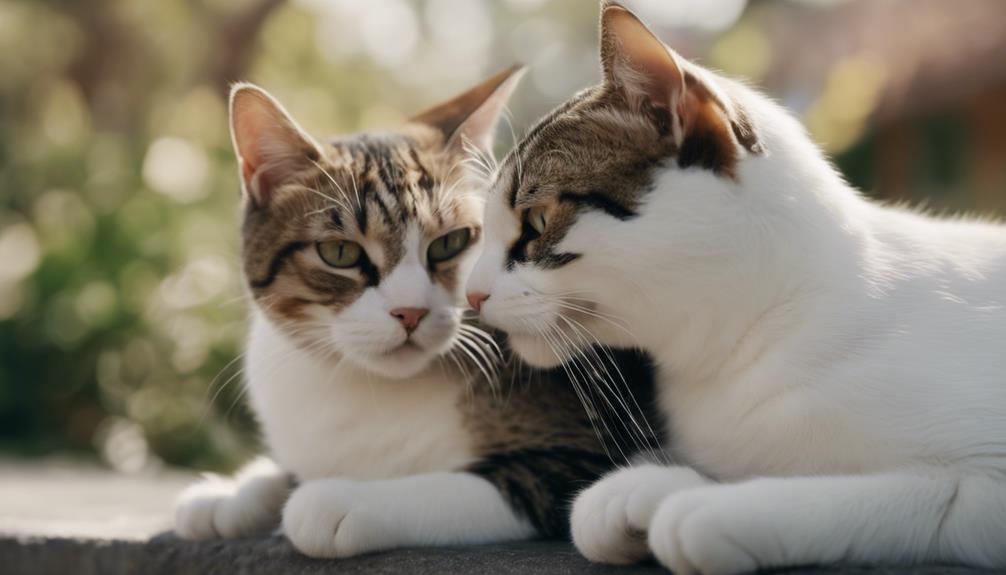
The sense of smell plays a crucial role in how cats interact with each other and their environment. By using scent, cats can communicate with one another, mark their territory, and even establish social hierarchies within a group. Understanding the importance of scent in feline socialization can help cat owners create a harmonious environment for their pets.
Scent is used by cats to identify familiar individuals, including other cats and humans. By rubbing against objects or people, cats deposit their scent through special glands located on their face, paws, and tail. This behavior, known as scent marking, helps cats create a sense of ownership over their surroundings and establish boundaries with other animals.
In multi-cat households, scent plays a crucial role in maintaining peace and order among the feline residents. Cats use scent to communicate their status within the group, avoid conflicts, and establish a sense of familiarity and security. By providing multiple scent-marking opportunities, such as scratching posts, bedding, and toys, cat owners can help reduce tension and promote positive interactions among their pets.
Overall, scent is an essential tool that cats use to navigate their social world and communicate with other animals. By understanding the role of scent in feline socialization, cat owners can better meet their pets' needs and create a happy and harmonious environment for all their feline companions.
Importance of Scent in Cat Communication
Scent plays a crucial role in cat communication, serving as a primary method for conveying information and establishing social bonds within feline communities. Cats have a highly developed sense of smell, with scent recognition being a vital tool for them to identify individuals, mark territories, and even detect emotional states. Through olfactory communication, cats can convey information about their identity, reproductive status, and social hierarchies to other felines in their environment.
Research shows that cats possess a specialized organ called the vomeronasal organ, also known as the Jacobson's organ, which enhances their ability to detect pheromones and other scent cues. This organ allows cats to engage in a form of chemical communication that's imperceptible to humans but vital for feline social interactions. By sniffing, rubbing, and even grooming each other, cats exchange scent signals that help in forming cohesive social structures and reducing conflicts within their groups.
Understanding the importance of scent recognition and olfactory communication in cats is essential for cat owners and enthusiasts seeking to provide enriching environments that support their pets' natural social behaviors. By acknowledging the significance of scent in cat communication, individuals can better cater to their feline companions' social and emotional needs.
Scent Marking Behavior in Cats
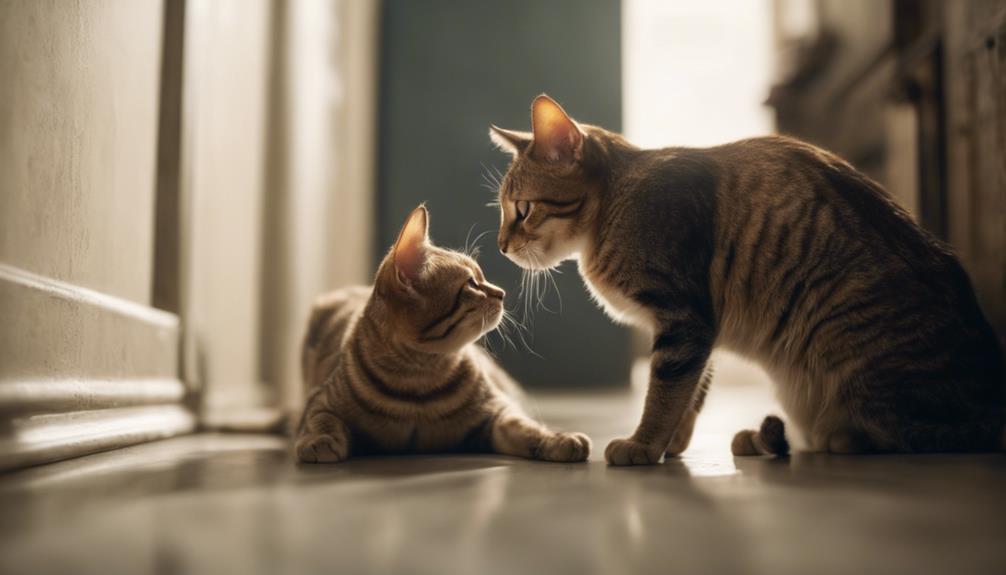
Cat marking behavior serves as a fundamental aspect of feline communication strategies, encompassing a variety of scent-marking techniques that play a crucial role in social interactions among cats. Through pheromone communication, cats use scent marking to establish territories, convey information about their identity, and maintain social hierarchies within a group.
When a cat rubs its face against objects or individuals, it isn't only leaving behind scent markers but also engaging in olfactory bonding with other cats in its environment. These scent marks contain chemical signals that carry information about the cat's age, sex, reproductive status, and even emotional state.
Understanding scent marking behavior is essential for cat owners and caregivers to create a harmonious environment for their feline companions. By acknowledging the significance of pheromone communication and olfactory bonding in cats, individuals can better interpret their pets' behaviors and provide enriching experiences that cater to their natural instincts. Properly managing scent marking behavior can help prevent conflicts between cats and promote a sense of security and well-being in multi-cat households.
Scent Signals for Territory Establishment
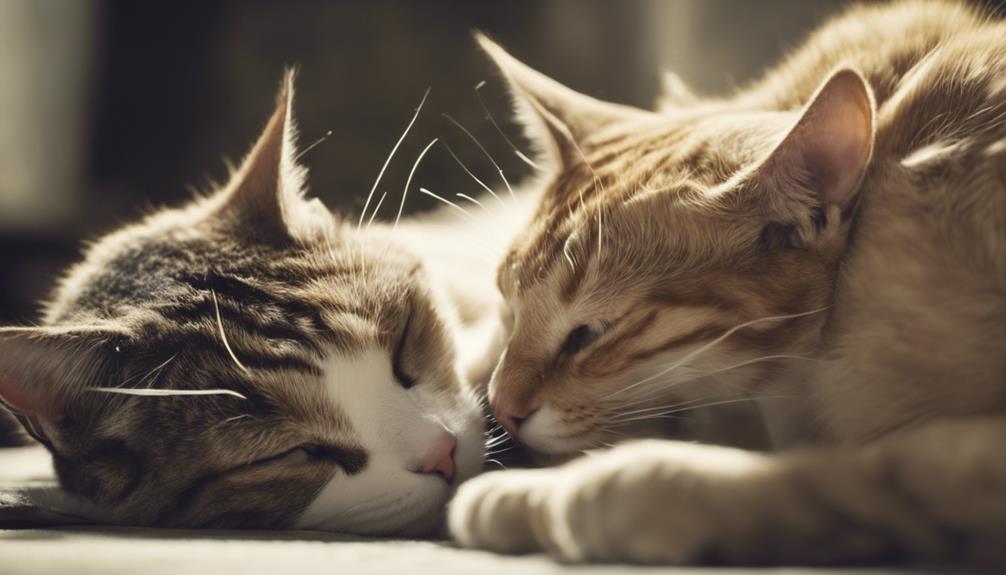
Cats use scent signals to establish their territories, marking boundaries and communicating their presence to other felines. Through scent marking, cats convey vital information such as their readiness to mate, their dominance status, and potential threats in the environment.
Understanding the intricate network of scents allows cats to navigate and interact within their territories effectively.
Territory Marking Behavior
During territorial marking behavior, felines utilize scent signals to establish and communicate ownership of their space within a social context. Cats mark their territories through scent to convey important messages to other cats in the vicinity.
- Scent Preferences: Cats have specific scent preferences that guide them in choosing the type of scent to mark their territories effectively.
- Territorial Boundaries: Scent marking helps cats demarcate their territorial boundaries clearly, reducing the likelihood of conflicts with other cats.
- Scent Recognition: Felines can recognize and interpret the scents left by other cats, aiding in understanding the social dynamics within their environment.
- Social Interactions: Through scent signals, cats establish social hierarchies and communicate their presence, helping maintain order and structure in their social groups.
Communication Through Scents
Within feline social structures, scent signals play a vital role in establishing territories and communicating ownership boundaries effectively. Cats utilize scent cues to mark their territories, creating a sense of belonging and security within their environment.
Through olfactory communication, cats can convey information about their presence, status, and readiness to interact with others in their surroundings. This form of communication is crucial for maintaining social hierarchies and avoiding conflicts among feline groups.
Scent Exchange in Cat Relationships
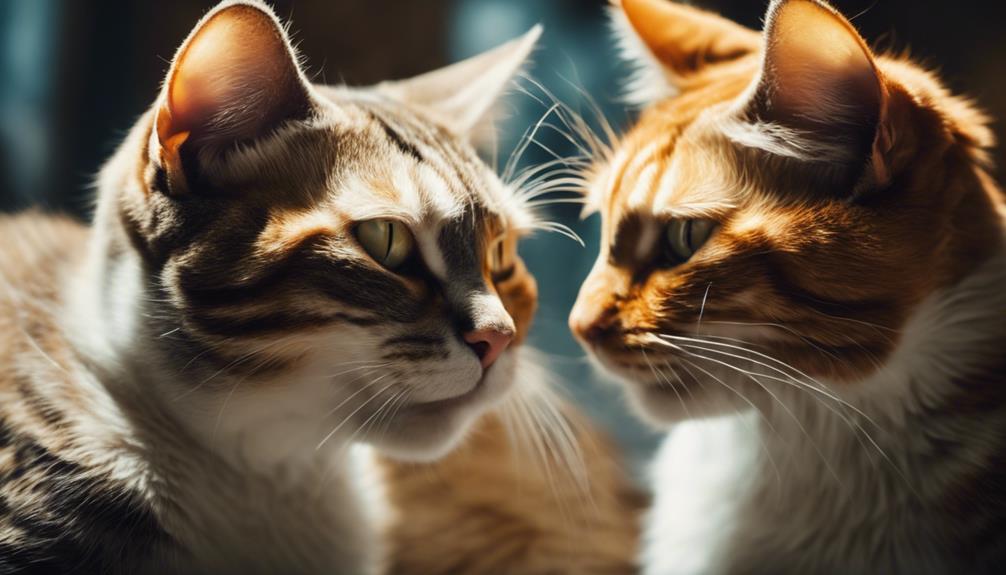
Engaging in scent exchange is a crucial aspect of communication and bonding among felines. Cats use scent recognition and memory to navigate their social world, creating intricate relationships through olfactory cues. When cats engage in scent exchange, they aren't only communicating but also establishing connections that go beyond mere words.
- Territorial Marking: Cats use scent marking to establish their territory and communicate boundaries to other cats in the area.
- Bonding Rituals: Mutual scent grooming between cats serves as a bonding ritual, reinforcing social connections and trust within a group.
- Stress Reduction: Familiar scents, especially those of littermates or close companions, can help reduce stress and anxiety in cats.
- Hierarchy Establishment: Scent exchange also plays a crucial role in establishing social hierarchy within a group of cats, influencing interactions and dynamics among individuals.
Understanding the significance of scent exchange in cat relationships can provide valuable insights into their social behaviors and interactions.
Scent and Social Hierarchy Among Cats
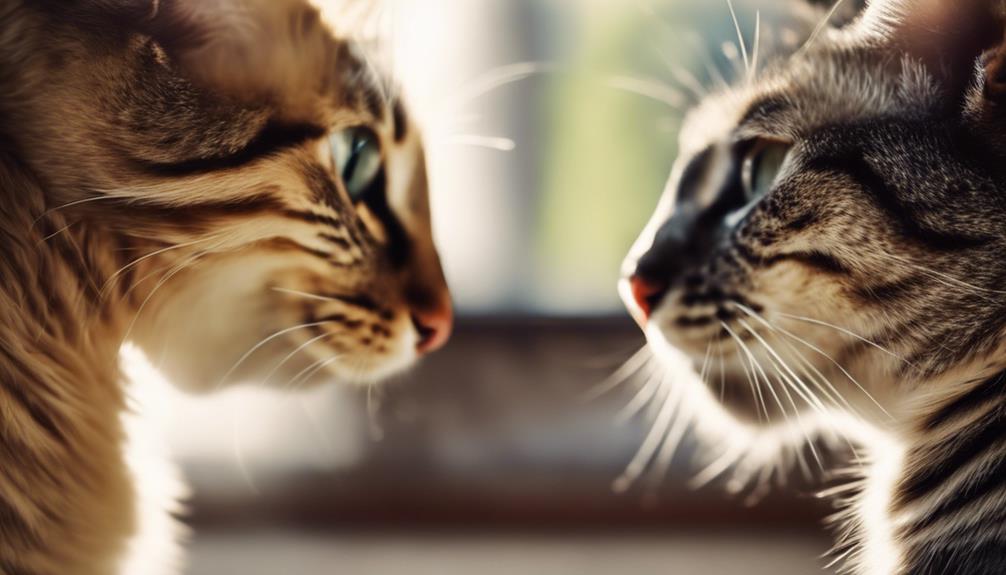
Cats establish social hierarchies through scent marking behavior. Dominant individuals often mark more frequently and in prominent locations. The act of marking serves as a way for cats to assert their dominance and communicate their status to others in the group.
Understanding these scent-driven social dynamics can provide valuable insights into feline behavior and interactions within multi-cat households.
Scent Marking Behavior
Scent marking behavior in cats plays a crucial role in establishing and maintaining social hierarchies within their communities. Cats use scent recognition and preferences to communicate various messages to other felines, shaping their social dynamics.
Here are four key points to consider:
- Territorial Claims: Cats mark their territory with scent to establish boundaries and ownership.
- Status Signaling: Higher-ranking cats often use scent marking as a display of dominance over lower-ranking individuals.
- Social Bonding: Mutual scent marking among familiar cats helps strengthen social bonds within groups.
- Stress Communication: Changes in scent marking behavior can indicate stress or discomfort in cats, affecting their social interactions.
Understanding these aspects of scent marking behavior is crucial for interpreting feline social structures.
Dominance Through Scent
Establishing social hierarchies among feline groups, scent plays a pivotal role in signaling dominance and maintaining order within cat communities. Cats use scent to display dominance, often engaging in behaviors such as marking territory with urine or facial rubbing to assert their position within the social hierarchy. Scent rivalry can occur when a dominant cat marks an area, prompting other cats to either challenge the dominant cat's authority or submit to it. This dominance display through scent helps prevent conflicts by allowing cats to communicate their rank without direct confrontation. Understanding these scent-based communication cues can help cat owners manage multi-cat households more effectively and create a harmonious environment for their feline companions.
| Dominant Cat Behaviors | Scent Communication | Social Impact |
|---|---|---|
| Urine Spraying | Marking Territories | Establishing Order |
| Chin Rubbing | Signaling Dominance | Preventing Conflicts |
| Scratching Furniture | Asserting Authority | Maintaining Hierarchy |
Scent's Role in Bonding With Humans
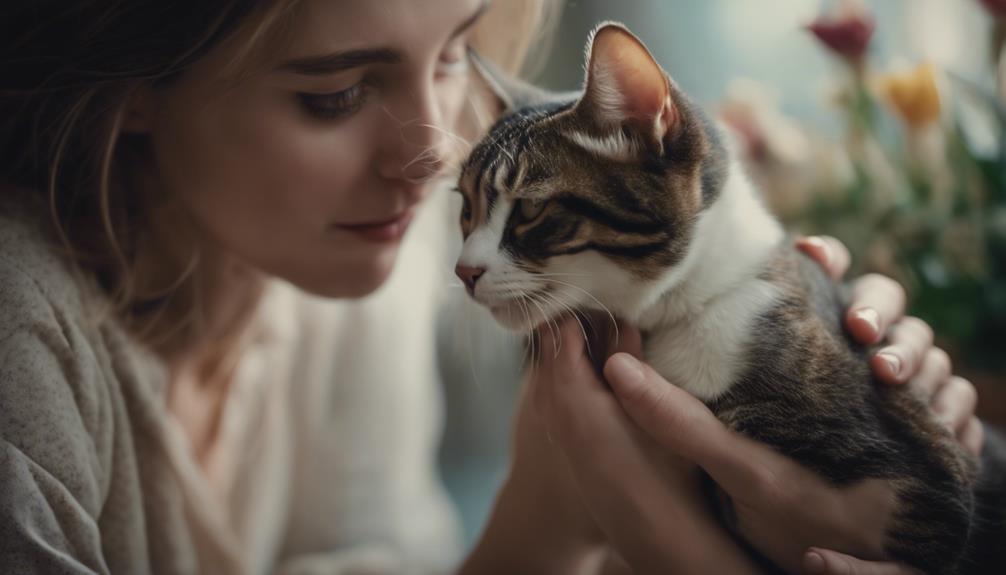
The olfactory system of felines plays a crucial role in forming strong bonds with their human companions. Cats use scent as a powerful tool to connect with their human family members and establish a sense of familiarity and security. Here are some key points to consider regarding scent's role in bonding with humans:
- Scent Marking: Cats often rub their scent glands against objects or people to mark their territory and create a shared scent profile, enhancing the bond.
- Comfort and Security: Familiar scents provide cats with comfort and a sense of security, leading to a deeper emotional connection with their human caregivers.
- Positive Reinforcement: Associating pleasant scents with positive experiences, such as treats or playtime, can strengthen the bond between cats and humans.
- Stress Reduction: Familiar scents can help reduce stress and anxiety in cats, promoting a more relaxed and trusting relationship with their human companions.
Understanding and respecting the role of scent in bonding can significantly improve the relationship between cats and their human counterparts, fostering a harmonious and fulfilling connection.
Managing Scent for Positive Socialization
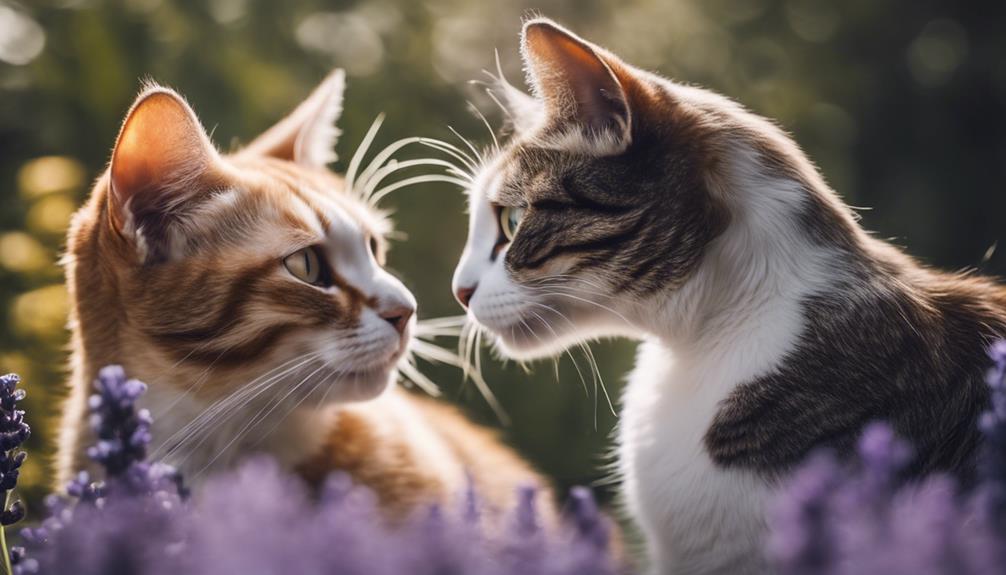
Effective management of odors plays a crucial role in facilitating positive socialization experiences for cats. Scent enrichment, which involves introducing familiar and comforting scents into a cat's environment, can help reduce stress and anxiety, making social interactions more enjoyable. When introducing new scents, it's essential to do so gradually to prevent overwhelming the cat. Start by incorporating scents that the cat is already familiar with, such as the scent of their owner or other household pets. This familiarity can create a sense of security and comfort, laying the foundation for positive socialization experiences.
Additionally, scent introduction is a valuable tool when introducing cats to new environments or other animals. By swapping bedding or toys between cats, their scents will mingle, promoting a sense of familiarity and reducing potential conflicts. Similarly, introducing scents from a new environment before the cat enters it can help alleviate anxiety associated with unfamiliar surroundings. Overall, managing scents thoughtfully and strategically can greatly enhance a cat's socialization process and contribute to their overall well-being.
Frequently Asked Questions
Can Cats Recognize Each Other's Scents After Being Separated for a Long Time?
Cats can recognize each other's scents after long separations due to their keen scent recognition abilities and strong olfactory memory. This enables them to detect familiar scents, facilitating reconnection and social bonding.
Do Different Cat Breeds Have Distinct Scent Preferences or Markers?
Different cat breeds exhibit distinct scent preferences, potentially due to genetic variations. Research suggests that scent recognition can differ among breeds, impacting how they interact socially. Separation periods may affect scent-based interactions between cats.
How Can a Cat's Scent Change When They Are Sick or Stressed?
When a cat is sick or stressed, their scent changes, affecting scent recognition and social interactions. Illness can alter pheromone production, causing separation anxiety. Stress-induced changes in scent may impact how cats interact with others.
Is There a Way to Mimic a Cat's Scent to Help With Socialization or Bonding?
Mimicking a cat's scent can aid in bonding and socialization. Research shows that cats respond positively when scents align. Utilizing this method may enhance relationships, creating a sense of familiarity and comfort.
Can Scent Play a Role in Resolving Conflicts Between Cats in a Multi-Cat Household?
Scent communication is pivotal for cats in multi-cat households. Olfactory cues establish social hierarchy and resolve conflicts. Behavior modification techniques, like using familiar scents strategically, can help ease tensions and promote harmonious interactions among feline companions.











